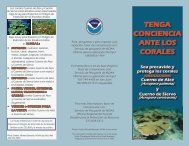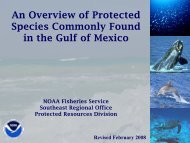NOAA Technical Memorandum NMFS-SEFSC-xxx
NOAA Technical Memorandum NMFS-SEFSC-xxx
NOAA Technical Memorandum NMFS-SEFSC-xxx
You also want an ePaper? Increase the reach of your titles
YUMPU automatically turns print PDFs into web optimized ePapers that Google loves.
Supplemental surveys of A. palmata at two thicket sites (LG and HS) in Oct. 1998suggest that Hurricane George increased the proportion and abundance of small andmedium fragments and decreased the size of standing colonies at both of these sites (Fig.2). In contrast, very few fragments were found in qualitative observations (andsubsequent surveys) at the LD sites suggesting that the thicket structure aided in retaininghurricane-generated fragments.At all four fully-censused sites (PI, FR, ML, LG), the total “amount” of A.palmata, expressed either as total colony abundance or total LAI, showed drastic declinebetween 1998 and 1999 and has shown only marginal recovery from 1999 to 2000 (Fig.3). Repeated measures ANOVA on ranks showed significant decline in total LAI overthe three survey years (p=0.042). However, total A. palmata abundance (standingcolonies + fragments) at LG, the only thicket in this comparison, remained quite stable(Fig. 3A).The average condition (estimated % live surface) of all A. palmata coloniesdeclined slightly but significantly (p=0.034) from 1998 to 1999, but had recovered by2001 to the original level of ~ 60% (Fig. 4). The prevalence of specific conditions suchas infestation by threespot damselfishes (Stegastes planifrons) or of white band disease(WBD) are shown in Fig. 5. WBD prevalence is



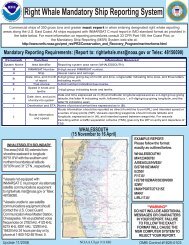

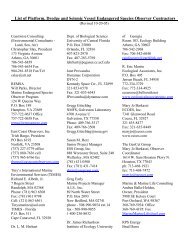
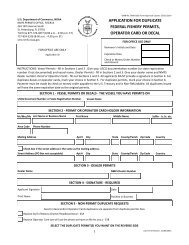
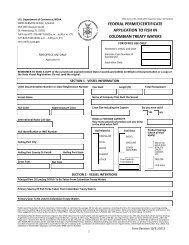
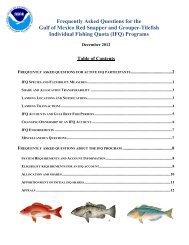
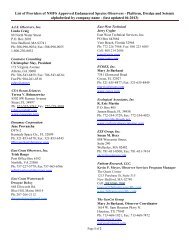
![Right Whale Fact Sheet [PDF] - Southeast Regional Office - NOAA](https://img.yumpu.com/28432664/1/190x245/right-whale-fact-sheet-pdf-southeast-regional-office-noaa.jpg?quality=85)

